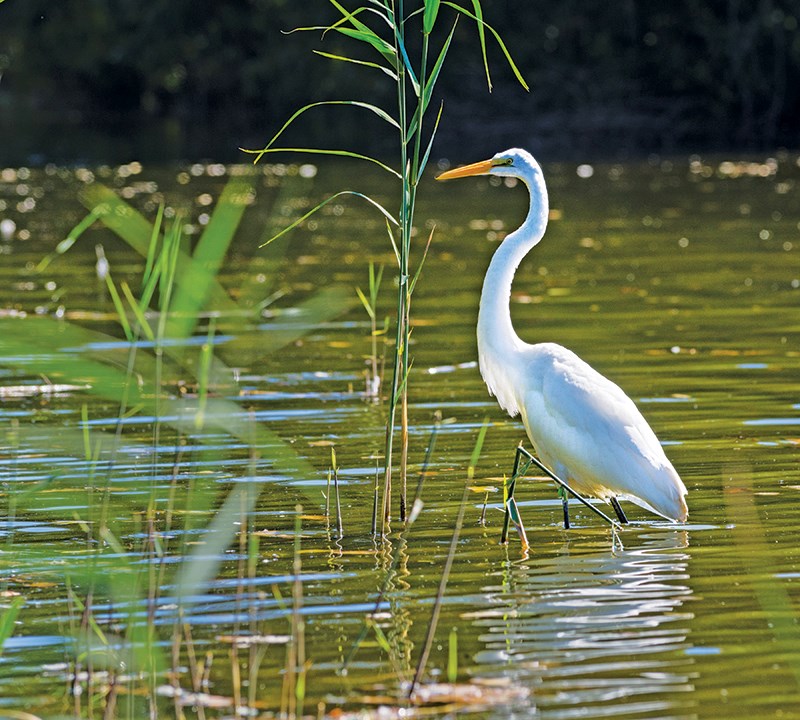Cathy Dobson
The St. Clair Region watershed underwent a checkup this year and the results were not good.
“I’m not going to sugar coat it. I’m going to say it like it is,” Erin Carroll, manager of biology with the St. Clair Region Conservation Authority, told a recent Green Drinks roundtable.

The watershed for Sarnia, Point Edward, St. Clair Township and the rest of Lambton County is tested and analyzed every five years.
The 2018 report card rated the quality of surface water, wetlands, and tree conditions poor to very poor in almost every category.
One bright spot was groundwater quality, which earned an A to A- grade. In the eight monitoring wells tested nitrate concentrations were better than drinking water guidelines, although chloride levels were elevated some wells, Carroll said.
“I don’t want to give the impression that it’s all doom and gloom,” she told about 50 people gathered for Green Drinks at 100 Christina St.
“I’m trying to motivate people to do better. I don’t want anyone to think it’s a lost cause.
“We need to focus on what we can do,” Carroll said.
Number one on her proactive list for urban dwellers is planting native trees, shrubs, wildflowers, and pollinator gardens.
“Native plants build a base for everything else,” she said. “They may look weedy sometimes but people appreciate them when they attract birds and butterflies.”
She also encourages homeowners to leave sticks, wood and leaves in the yard to provide habitat for small animals.
“And don’t rake and bag your leaves,” Carroll said. “Leave the biomass in place. Maybe mulch them but leave them on the ground so they can be the natural fertilizer, then no one has to go out and buy artificial fertilizers for their lawns.”
She suggested registering your garden with monarchwatch.org, a non-profit group dedicated to bringing butterfly populations back to their native areas.
For those who don’t mind a snake or two, Carroll said backyard compost heaps can be good breeding grounds for the endangered Eastern fox snake.
“For me, loss of Eastern fox snakes is the canary in the coalmine,” she said. “It’s a warning sign that we need to act.”
Homeowners can also help by finding alternatives to household detergents, cleaners and salt used to melt winter ice.
“Salt on the driveway is definitely not good for the waterways,” she said. Try sand instead, she suggested.
“When we all work together we can make a big impact.”
Improving the watershed starts with education and the Conservation Authority offers numerous programs for high school students to learn about habitat and forest restoration, species inventory, the ecosystem and human impact on the environment, Carroll added.
More schools could provide field trips if funding was available.
“We are working on our end to make trips more feasible financially,” said Carroll. “Being there is so important, to hug the oak trees, catch the bugs and get into the water.”
The 2018 St. Clair Region watershed report card handed out mostly D grades, but she stressed positive measures are underway.
For instance, Sarnia’s progress on sewer separation is helping improve water quality in the St. Clair River. The Conservation Authority planted about 60,000 trees last year in Sarnia-Lambton and, while only about 11.3% of the watershed has tree coverage, that number isn’t moving backwards. However, it’s still a far cry from the 30% generally recommended.
For more on the 2018 report card, including subwatershed report cards, visit
https://www.scrca.on.ca/about-us/2018-watershed-report-cards/. For more on high school education programs, visit
https://www.scrca.on.ca/conservation-education/just-for-high-schools/.
INFO BOX:
The St. Clair Region has 14 subwatersheds. Sarnia, Point Edward and St. Clair Township are in the St. Clair River Tributaries subwatershed, which earned a D Grade overall this year. Some highlights:
- Poor forest cover, poor forest interior and poor wetland cover. Most woodlands are smaller than five hectares.
- Forest cover is 14.1%, above average for the St. Clair Region primarily thanks to trees on Aamjiwnaang First Nation.
- Phosphorus levels in surface water are almost nine times ministry guideline. Fecal bacterial levels are above the provincial guidelines.
- Benthic quality (the floor of the river) scored a C Grade.
